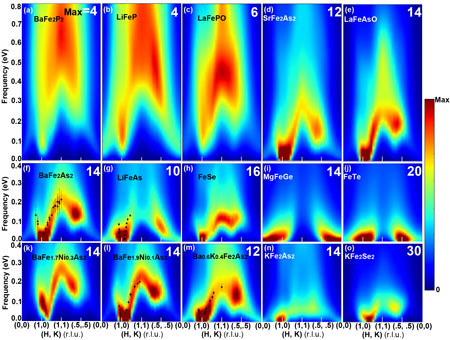
The 15 boxes in this image show the simulated intensity of spin excitations in 15 iron-based materials, including iron compounds that are high-temperature superconductors (images d–h). The x axis shows the momentum of the spin excitation in selected locations of 3D space, and the y axis shows the energy measured in electron volts (eV). The color code indicates the intensity of spin excitations with a given energy and momentum